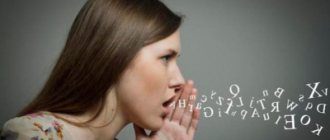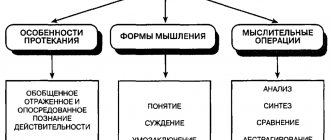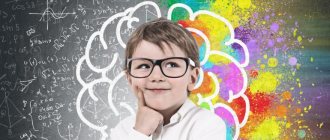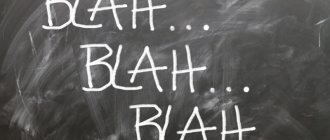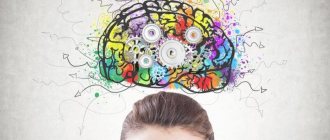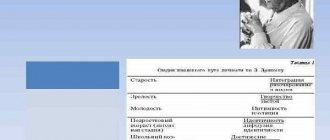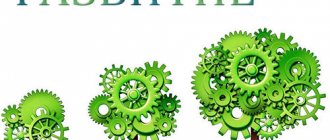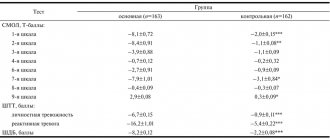There is a lot of controversy about intuition in trading.
Most people agree that intuition is nothing more than an instant interpretation of previous experience on a subconscious level. However, there are studies that show that the ability to predict future price movements depends on the skills of “social analysis”, i.e. analysis of other people's behavior. And based on research data, a special simulator was created to improve trading skills. We have made a completely localized version of these exercises for our readers.
The secret of trading intuition
Traders and portfolio managers recognize that some have an amazing talent for predicting the direction of markets. On the one hand, this is typical for achieving good results through risk management, however, traders who achieve high performance, in all likelihood, have some otherworldly gift for predicting the direction of price movement.
The ReThink Group has developed The Bloomberg Tradebook Trader Exercise , a tool that helps traders hone the skills needed to predict short-term price movements and which research shows has the power of that mysterious "X-factor." Ironically, research into the human brain and behavior shows that markets only masquerade as a numbers game. In reality, they represent a game of what neuroeconomists have labeled “deliberate social risk.”
Thus, this brain workout for traders uses classic research in the psychology of social perception. If in fact the brain is a bit like a muscle, then you can expect that its participation in the exercise will help guide the trader into the right mindset so that he can execute his trades better.
Exploring the Nature of Trader Intuition
In 2010, The Journal of Finance published a stunning study by Caltech researchers Brugwier, Quartz and Bossaerts. Through experiments on the human brain and behavior, they demonstrated that social cognition, rather than mathematical and logical reasoning, underlies the less understood X-factor among traders. Those legendary portfolio managers and traders who appear to have a special talent for forecasting markets unknowingly rely on cognitive empathy, or in other words, mentalizing. This style of social thinking appears to be the force behind this exceptional pattern recognition ability that allows great traders to infer meaning from the signals conveyed through the dance of price action.
For the first time, the researchers conducted an experiment to create virtual market data that included intentional buying and selling (which they unfortunately called "insider presence").
They then conducted brain scans to determine which parts of the brain were active when individuals considered future price movements in this virtual market. In other words, the researchers determined which areas and structures of the brain were most involved in perceiving price movements. Finally, they conducted a third experiment that tested the ability to predict the direction of price movements using three traditional tests of social cognition and mathematics.
The results of this complex experiment were as follows: 1. 46-78% of study participants quite successfully predicted the direction of price changes. 2. Correct predictions correlate with performance on two tests of social cognition, the most powerful being the classic Heider-Simmel test, discussed below and used as the basis for exercises in The Bloomberg Tradebook Trader Exercise . 3. Math test scores showed no correlation with ability to predict price.
The classic Heider-Simmel experiment of 1944
More than 70 years after Fritz Heider and Marianne Simmel published their classic study of the perception of geographic shapes, their idea remains the most widely accepted study of the style of thinking known as “theory of mind.” Using geometric shapes alone, they found that almost 100% of all participants who observe these shapes animate these shapes and make up all sorts of stories about them. Even when the video files were played in reverse order, all but two of the study participants made up detailed stories based on the movements of the figures. Or, to put it literally, “they interpreted the picture as the action of animated creatures, mainly people.” In essence, Heider and Simmel successfully demonstrated that people tend to perceive the meaning of other people's intentions without even seeing their faces or the emotional tone of their actions. Traders who consistently and correctly predict the upcoming buying or selling needs of others by observing the behavior of changing digital symbols exhibit the same type of social thinking.
In fact, if we think about it, we see that all a trader or portfolio manager really cares about is “knowing” who will pay more tomorrow for what they buy today. Price forecasting, no matter what type of analysis a trader chooses, may look like a numbers game, but in reality it is a people game.
An exercise to increase sensitivity to intuitive cues
This is a challenging exercise that needs to be done throughout the day. But it is on its successful implementation that largely depends on how strong your intuitions and hidden abilities will be.
- Imagine that your eyes, ears, hands, skin, emotions and mind extend far beyond your body and its immediate environment. Try to understand how they feel if they step outside their “inner circle.”
- Try to feel this throughout the day.
- There is no need to work with all sources of information at once. Focus on one thing for one day - your eyes, your skin...
Conscious or subconscious intelligent processing?
As scientists have begun to better study brain activity through brain imaging and other advanced techniques, it has become widely accepted that much of our intellectual processing occurs at the subconscious level. Neuroscientist David Eagleman, best known for his 2015 PBS series Brain, stated in his book Incognito that “...most of what we do, think, and feel is beyond our conscious control. Your consciousness is a tiny part of what's going on in your brain... Our brains do information gathering and steering. It doesn't matter whether consciousness is involved in the decision-making process. And for the most part, no."
Consequently, traders, for the most part, do not truly consciously perceive that they are predicting the upcoming perceptions of other traders when making price predictions. They often talk about the market in terms of human behavior: "Who's going to buy here?" or "They're right on our heels!", but most traders blithely accept the common misconception that their price predictions are driven by what -probabilistic thinking. Although they often acknowledge the similarities between poker and trading, usually the aspect of human prediction goes unnoticed or at least greatly underestimated.
Working with the Third Eye
This is one of the most powerful, but at the same time the most risky methods of improving intuitive abilities.
In this material you will find complete instructions on how to open the Third Eye yourself.
Be careful, however, because the Third Eye is often easier to open than to close.
How to learn to listen to intuition by learning to work with dreams
In order to develop intuition and hidden abilities well, it is imperative to work with dreams. However, lucid dreams and other altered states of consciousness can be dangerous for an unprepared person; we will consider only the simplest and safest exercise.
- Place a piece of paper and a pen next to your bed.
- Before you fall asleep, try to clearly imagine your “dream of the day,” that is, an event that could bring you significant benefit tomorrow.
- Think about your “dream of the day” until you fall asleep.
- Immediately after waking up, draw or write down everything that first came to your mind as soon as you opened your eyes. This may have something to do with night dreams, or it may have nothing to do with them. It is important not to retell the dream, but to record the first thought or image of the morning.
- Look carefully at what is drawn or written and try to understand what it really means.
Expert knowledge, unconscious pattern recognition and trading intuition
It is also relatively fashionable to discount the value of unconscious pattern recognition or felt awareness.
Research in behavioral finance has convinced us to question the type of expertise we typically call intuition. However, leading scholars in judgment and decision making say the opposite: “Intuitive thinking is at the core of most advanced thinking” (Reina, 2012). Research points to evidence that more erudite thinkers rely on the essence or gist of a situation (essence - a deep understanding of something) to make a choice, rather than a literal and literal recalculation of factors. They distill the essence of the issues at hand rather than listing and prioritizing every possible outcome. Essentially, this is what the exercise is aimed at, the main question of where the price may move, as opposed to a more detailed analysis of all the factors that may influence price movement. A professional trader who listens and analyzes his inner voice actually has the ability to track price movements for many years.
Summary
Thus, it is safe to assume that participation in the Bloomberg Tradebook Trader Exercise program will allow you to use the most useful “muscles” of neurons. Consciously working on the real skills that underlie performance - social cognition - should end up flexing the trader's brain in a way that makes it easier and more effective at predicting the likely development of price action. We hope you enjoy this exercise and believe that its practical application will benefit your trading.
Sources:
- Bruguier, Antoine J., Steven R. Quartz, and Peter Bossaerts. “Exploring the nature of “trader intuition”.” The Journal of Finance 65.5 (2010): 1703-1723.
- Eagleman, David. Incognito. Robert Laffont, 2013.
- Heider, Fritz, and Marianne Simmel. “An experimental study of apparent behavior.” The American Journal of Psychology 57.2 (1944): 243-259.
- Eagleman, 2011. Incognito, The Secret Lives of the Brain, Pantheon Books.
- Reyna, A new intuitionism: Meaning, memory and development in Fuzzy-Trace Theory. Judgment and Decision Making, 7:3, 332-359.
- “The Brain with David Eagleman.” PBS. October-November 2015. Television.
Patents
The author of this device is Mirzakarim Sanakulovich Norbekov, he even has patents:
- Patent for invention No. 2240719, title: “Method of M.S. Norbekov teaching people to realize their potential.” Application No. 2003131055/15 dated 10/22/2003, published 11/27/2004, last patent expiration: 10/23/2012.
- Utility model patent No. 46418, title: “Apparatus for the development of brain activity.” Application No. 2005108277/22 dated 03/24/2005, published 07/10/2005, last patent expiration 03/25/2011.
- Utility model patent No. 61114, title: “Apparatus for the development of brain activity.” Application No. 2005140181/22 dated 12/23/2005, published: 02/27/2007, patent expired 12/24/2006.
Patent No. 46418
He is quite well known on these Internets of ours, so we won’t dwell on him. Those who are interested can find it themselves, and we will move on to the simulator itself.
